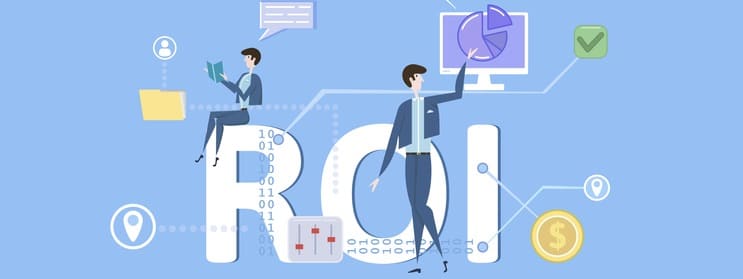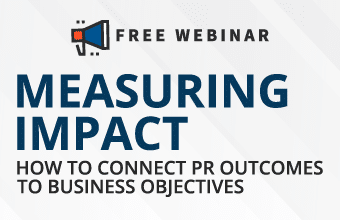Client education has become indispensable in the modern PR and communications landscape. By prioritizing knowledge sharing, agencies can create stronger, more collaborative relationships with their clients while achieving measurable returns on investment. The ROI of client education extends beyond surface-level benefits, offering long-term advantages for clients and service providers. This approach fosters trust, improves outcomes, and ultimately positions agencies as indispensable strategic partners.

ROI: From Knowledge to Conversions
The ROI of client education is both tangible and intangible. On a practical level, educated clients are more likely to invest in additional services or renew contracts. Their understanding of your capabilities and value proposition makes them more receptive to upselling opportunities. That’s why all businesses use every opportunity to engage with clients and educate them.
Moreover, they are less likely to churn, as they can see the direct correlation between your work and their results.
Data underscores the importance of education in driving conversions. Agencies that implement client education programs report higher client retention rates and increased lifetime value per client. These metrics highlight the financial benefits of investing in knowledge-sharing initiatives.
Beyond direct revenue impacts, the ROI of client education also enhances your agency’s reputation. Clients who feel supported and informed are more likely to recommend your services to others. This ripple effect strengthens your position in the industry and opens the door to new business opportunities.
The Role of Technology in Scaling Client Education
Technology plays a pivotal role in making client education scalable and accessible. Digital tools such as learning management systems (LMS) and AI-driven platforms can streamline the delivery of educational content. For instance, an LMS allows agencies to create and share online courses that clients can access at their convenience. Widgets like ConvertMore try to bridge the gap between website visits and phone calls.
These days, AI-powered solutions take personalization to the next level. By analyzing client interactions and preferences, these tools can recommend tailored content, ensuring that each client receives information relevant to their specific needs. Virtual training sessions and interactive webinars enhance engagement, making education more dynamic and impactful.
Investing in technology improves the client experience and reduces the resources required for traditional education methods, such as in-person workshops or printed materials. This efficiency allows agencies to reach a larger audience without compromising quality.
The Strategic Value of Client Education
At its core, client education is about empowering clients with the knowledge and tools they need to make informed decisions—and fostering stronger client relations in the process. For PR agencies, this means going beyond tactical execution and helping clients understand the complexities of media relations, brand reputation, and campaign strategy. When clients are well-informed, they can set realistic expectations, make confident decisions, and align their objectives more closely with agency goals.
Educating clients also minimizes misunderstandings and prevents conflicts. By clarifying processes and setting transparent benchmarks, agencies can reduce the friction that often arises from unmet or unclear expectations. In turn, this strengthens the agency-client relationship and improves overall satisfaction.
Additionally, educated clients are more likely to advocate for your services within their networks. When they understand the value you bring to the table, they become ambassadors for your agency, generating referrals and enhancing your reputation in the industry.
Building a Knowledge-Sharing Framework
Creating an effective client education program requires a structured and thoughtful approach. The first step is to assess your clients’ knowledge gaps. Some may need guidance on fundamental concepts, while others require insights into advanced strategies. By tailoring education to their needs, you can maximize its impact.
Resources such as webinars, workshops, whitepapers, and case studies are valuable tools for winning clients. These materials should be clear, actionable, and designed to address your client’s specific challenges. Regular touchpoints, such as monthly check-ins or quarterly reviews, ensure that education remains an ongoing process rather than a one-time effort.
For example, a corporate client might benefit from a deep dive into crisis communication strategies, while a nonprofit organization might need guidance on donor engagement campaigns. Customizing your educational resources demonstrates your commitment to understanding and addressing each client’s unique needs.
Empowering Teams to Become Educators
A successful client education program depends on the expertise and commitment of your team. PR professionals must be equipped to deliver educational content effectively through presentations, one-on-one consultations, or written materials. Internal training programs can help staff develop the skills needed to communicate complex ideas clearly and confidently.
Fostering a culture of mentorship within your agency further reinforces the value of knowledge sharing. When team members view education as a core responsibility, they are more likely to prioritize it in their client interactions. Encouraging collaboration and open communication ensures that education becomes integral to your agency’s approach.
To streamline this process, agencies can create templates and toolkits that staff can customize for different clients. These resources save time and ensure consistency while allowing room for personalization.
Addressing Industry Challenges
Despite its benefits, implementing a client education program can present challenges. Time constraints, limited resources, and varying client receptiveness are common obstacles. However, these hurdles can be overcome with strategic planning and innovative solutions.
One effective strategy is to integrate education into existing workflows. For example, incorporating brief educational sessions into regular client meetings ensures that knowledge sharing happens organically. Additionally, leveraging technology can help offset resource limitations by automating repetitive tasks and providing self-service options for clients.
Measuring the effectiveness of your education program is essential for continuous improvement. Client surveys, performance metrics, and feedback loops provide valuable insights into what works and what doesn’t. You can refine your approach and maximize ROI by analyzing these data points.
Conclusion: A Call to Action for the PR Industry
The ROI of client education underscores its significance as a strategic priority for PR agencies. By empowering clients with knowledge, agencies can enhance collaboration, improve retention, and drive conversions. The benefits extend beyond financial gains, fostering stronger relationships and elevating the industry’s reputation for transparency and value.
This approach represents an opportunity to redefine client engagement in the PR industry. Agencies that embrace knowledge sharing as a core component of their service offerings position themselves as leaders in an increasingly competitive market. PR professionals can turn their expertise into a conversion engine that drives long-term success by prioritizing education.



